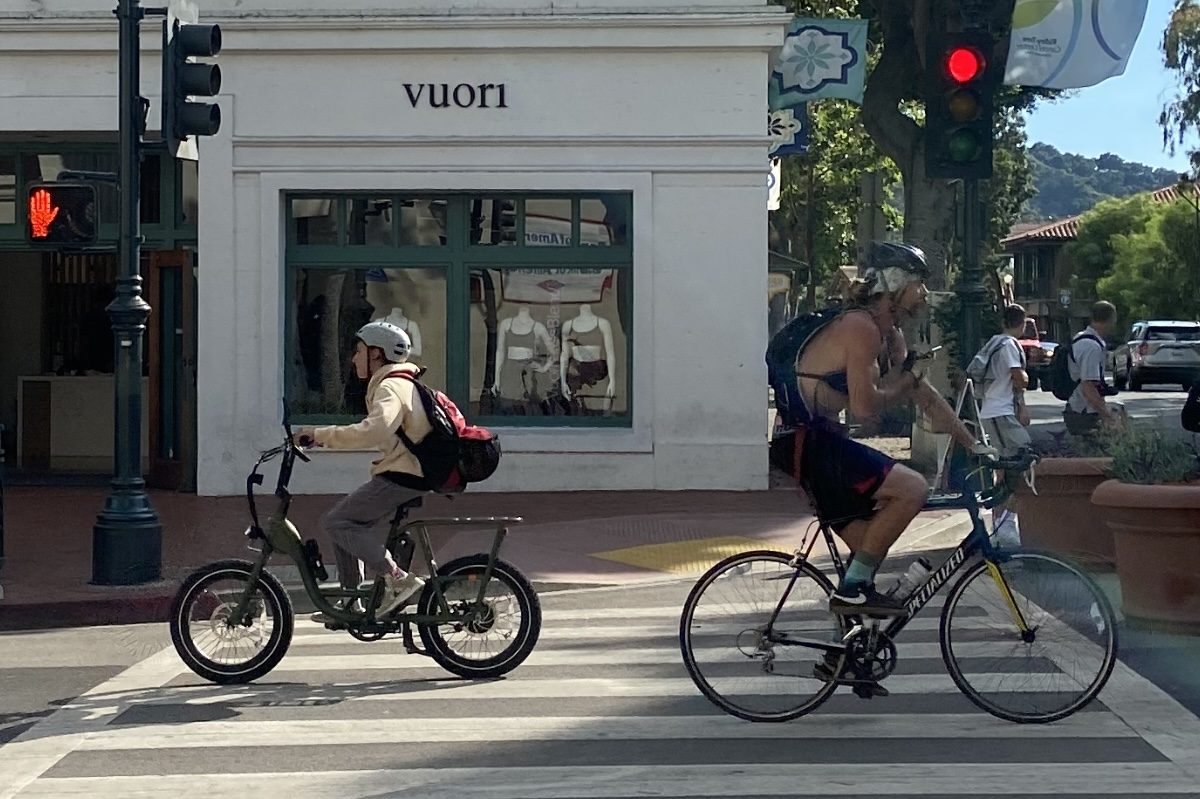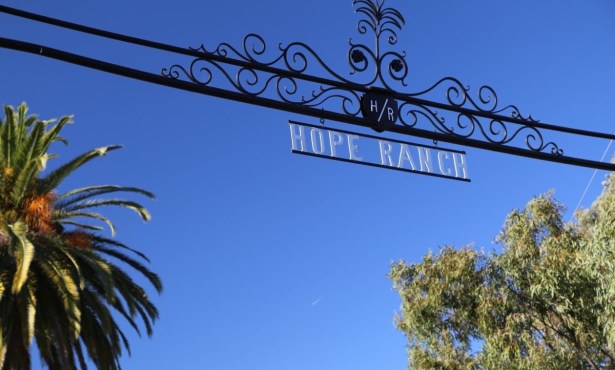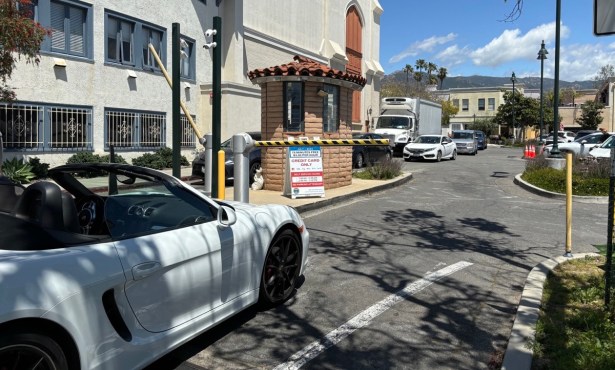A Look Inside the Electric Bike Craze in Santa Barbara
As E-Bikes Gain Popularity, City Leadership Explores How to Make the Roads Safer for Everybody

In Santa Barbara, electric bikes are impossible to miss. Buzzing around downtown, zipping up State Street, there are commuters on their way to and from work, teens riding in twos, and tourists on the popular white BCycle rentals for daily rides.
To the riders themselves, e-bikes offer a departure from daily car use, making urban commutes more efficient and providing versatile transportation that can be charged at home. But to pedestrians, motor-vehicle drivers, city planners, or people tired of dodging the daredevil teenagers swerving around, the popularity and prevalence of these e-bikes pose new challenges that need to be addressed before it’s too late.
In other California cities, the same e-bikes — often made by companies such as Rad Power Bikes or Aventon — have taken hold with junior high– and high school–age students, but as laws surrounding e-bikes lag behind their popularity, the debate arises over what local governments could do, and whether they should step in to create stricter guidelines for e-bike use.
Bad Actors on Bikes
Santa Barbara City Councilmember Oscar Gutierrez, who himself is an avid e-bike rider, believes there should be a balanced approach between villainizing bicyclists and holding them accountable for reckless riding.
He says that he “wholeheartedly believes” that the majority of the people using e-bikes in town are “law abiding, responsible, and considerate,” though he described his own personal interactions with young riders who have been “bad actors on their bikes.”

“They’re making all of us look bad, because I myself have an e-bike,” Gutierrez told the Independent.
Regarding possible political or legal measures, Gutierrez said he doesn’t think banning e-bikes outright, like some communities have done, would be the way to handle the problem. “But we can regulate it,” he said. “We can enforce it.”
Specifically, Gutierrez said he would be in favor of supporting local regulations that require e-bike riders to have a license and be older than 16, or levying fines and penalties “in the thousands” for offenses. “I don’t want these bad actors to ruin it for me and for the other law-abiding people that are using this technology.”
Councilmember Gutierrez has brought up the issue of electric bike regulations to the Santa Barbara City Council “several times,” he said, and while there is support, the city is still working out the specifics on “the legal front.”
Enforcement of such laws poses challenges too, since the onus of responsibility would fall on the police department, which, as Gutierrez pointed out, is understaffed and trying to focus on major crimes. “They don’t want to be stopping kids on bikes for not having their helmets on,” he said.
But Gutierrez admitted that it is “getting to the point where we do have to do something sure” before there is a major catastrophe. “Because we don’t want kids getting hurt,” he said. “We don’t want elderly getting hurt. We don’t want anyone getting hurt. So this is a public safety issue, and that is one of our major priorities.”
Risky Riding
The popularity of electric bikes skyrocketed during the COVID-19 pandemic, accelerated by the demand for alternatives to public transportation, especially in urban areas, and a desire to spend more time outdoors. Even while the global market for non-motorized bikes has taken significant hits over the years, electric bike ownership and app-based rental services such as Citi Bike and BCycle have witnessed a surge in domestic popularity.
Consistent with an uptick in e-bike usage has been an increase of e-bike accidents nationally, up 70 percent from 2017 to 2020. Safety concerns are especially being raised for teens after stories of fatal and non-fatal crashes involving teens sprouted up around the country.
On August 2, two young girls riding in downtown Santa Barbara were injured and one suffered a leg injury while riding tandem on an electric bike on State Street and Canon Perdido. The incident was one of the first times a teenager was reported injured riding an e-bike in the city, though there have been several reports of smaller crashes between e-bikers and pedestrians with no injuries reported.
In Encinitas, 15-year-old Brodee Champlain-Kingman was killed while riding his electric bike in June 2023, prompting the city council to declare a local emergency and to allow the city to more quickly put new safety measures in place. In January 2021, 12-year-old Molly Steinsapir crashed while riding on the back of a Rad Power electric bike in Los Angeles County while her friend, an 11-year-old, drove. Steinsapir passed away from her injuries two weeks later.
A state bill proposed by Assemblymember Tasha Boerner — who represents North San Diego County, where e-bike accidents involving teens have surged in recent years — would prohibit anybody under 12 from operating any type of e-bike and “create an e-bike license program with an online written test and a state-issued photo identification for those persons without a valid driver’s license.”
How to Coexist
Attorney Jessica Phillips, a partner at Maho Prentice Attorneys at Law, a personal injury firm based in Santa Barbara, sat down with the Independent to help give a broader perspective of the impact electric bikes have had on the Santa Barbara area, and the legal ramifications driven by accidents and injuries.
Regarding the typical age demographics of the clients she represents in cases of injuries stemming from bicycle collisions, Phillips said her firm represents individuals of all ages, not just the kids.
Out of the clients they’ve represented and cases they have looked at, Phillips said there is no consistent party at fault either, whether that is motorists, e-bike riders, or pedestrians. However, she did note that a surprising amount of people don’t wear helmets while riding, which has led to critical trauma in cases.
“Things like wearing a helmet and the rider being responsible could help prevent really significant and catastrophic injuries,” Phillips said. “Just from a human perspective, I think it’s the safe and prudent thing to wear a helmet on a regular bike or an e-bike.”
Phillips noted that State Street and near Stearns Wharf were places with most frequent accidents, a fact that is consistent with bike collision data released by the City of Santa Barbara Police Department.
From 2020 to 2022, police reported more 200 accidents involving electric or non-motorized bikes in the City of Santa Barbara. The reports showed that more than 15 percent of these accidents occurred on State Street, while Cabrillo Boulevard, Castillo Street, and Carrillo Street constituted around 7 percent each. In those three years (when the COVID-19 pandemic triggered higher bike usage), more than a third of all bike accidents in Santa Barbara happened in high-traffic and pedestrian areas.
Phillips admitted that navigating how to share those more popular streets is confusing for everyone right now.
“There have been so many changes on State Street recently,” she said. “There are parklets, which now some of the parklets are gone. And it’s clearly marked sometimes in the middle of State Street that this is a bike lane, but it doesn’t say ‘No pedestrians.’ Maybe if that was more clear, that could increase safety as well, because right now you can walk anywhere, and you can ride your bike anywhere.”
Phillips finished by saying that e-bike safety is about finding balance between maintaining fun and creating a safe environment for everyone in the community, even if that means instituting more formal ordinances.
For the foreseeable future, e-bikes will continue to be a prevalent or (depending on your perspective) pervasive element of the Santa Barbara area roads, and while the impact of technology has vastly altered how bikes have looked and operated from 1898 to 2023, at their core, bicycles —motorized or not — offer a way to navigate the beautiful town around us.


[Click to enlarge] Map of Santa Barbara from 1898 with a detail of the map showing Short’s Bicycle Store. | Credit: Library of Congress
The introduction of electric bikes may take some getting used to by society, just as previous innovative means of transportation required a period of adaptation, but eventually, like with planes, trains, and automobiles, e-bikes will be seen as a normal characteristic of our daily life — it’s only a matter of time before public safety measures and regulations catch up with their popularity.
And after all, these two-wheeled machines have long been at the center of Santa Barbara’s spirit, as Councilmember Gutierrez pointed out when showing one of the earliest maps displayed in City Hall: “Whoever came up with this map decided to highlight different buildings that were really popular in that era,” he said pointing to the top right corner. “If you see here, it says ‘Short’s Bicycle Store.’
“At the point when they drew this map, these buildings were all really popular to the community, including the bike store,” he continued. “Bicycles have been a part of Santa Barbara and its culture for well over 100 years to the point where it was documented. They wanted people to know bikes are part of our culture, a part of our identity.”




You must be logged in to post a comment.